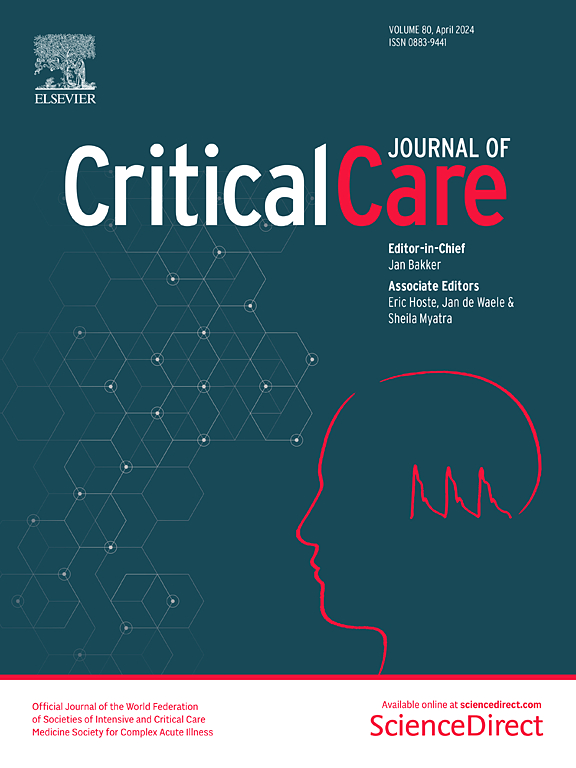Clinical subtypes in critically ill patients with sepsis: validation and parsimonious classifier model development
IF 8.8
1区 医学
Q1 CRITICAL CARE MEDICINE
引用次数: 0
Abstract
The application of sepsis subtypes to enhance personalized medicine in critically ill patients is hindered by the lack of validation across diverse cohorts and the absence of a simple classification model. We aimed to validate the previously identified SENECA clinical sepsis subtypes in multiple large ICU cohorts, and to develop parsimonious classifier models for δ-type adjudication in clinical practice. Data from four cohorts between 2008 and 2023 were used to assign α, β, γ and δ-type in patients fulfilling the Sepsis-3 criteria using clinical variables: (I) The Molecular diAgnosis and Risk stratification of Sepsis (MARS, n = 2449), (II) a contemporary continuation of the MARS study (MARS2, n = 2445) (III) the Dutch National Intensive Care Evaluation registry (NICE, n = 28,621) and (IV) the Medical Information Mart for Intensive Care including (MIMIC-IV, n = 18,661). K-means clustering using clinical variables was conducted to assess the optimal number of classes and compared to the SENECA subtypes. Parsimonious models were built in the SENECA derivation cohort to predict subtype membership using logistic regression, and validated in MARS and MIMIC-IV. Among 52.226 patients with sepsis, the subtype distribution in MARS, MARS2 and NICE was 2–6% for the α-type, 1–5% for the β-type, 49–65% for the γ-type and 26–48% for the δ-type compared to 33%, 27%, 27% and 13% in the original SENECA derivation cohort, whereas subtype distribution in MIMIC-IV was more similar at 25%, 24%, 27% and 25%, respectively. In-hospital mortality rates were significantly different between the four cohorts for α, γ and δ-type (p < 0.001). Method-based validation showed moderate overlap with the original subtypes in both MARS and MIMIC-IV. A parsimonious model for all four subtypes had moderate to low accuracy (accuracy 62.2%), while a parsimonious classifier model with 3 variables (aspartate aminotransferase, serum lactate, and bicarbonate) had excellent accuracy in predicting the δ-type patients from all other types in the derivation cohort and moderate accuracy in the validation cohorts (MARS: area under the receiver operator characteristic curve (AUC) 0.93, 95% CI [0.92–0.94], accuracy 85.5% [84.0–86.8%]; MIMIC-IV: AUC 0.86 [0.85–0.87], accuracy 82.9% [82.4–83.4%]). The distribution and mortality rates of clinical sepsis subtypes varied between US and European cohorts. A three-variable model could accurately identify the δ-type sepsis patients.求助全文
约1分钟内获得全文
求助全文
来源期刊

Critical Care
医学-危重病医学
CiteScore
20.60
自引率
3.30%
发文量
348
审稿时长
1.5 months
期刊介绍:
Critical Care is an esteemed international medical journal that undergoes a rigorous peer-review process to maintain its high quality standards. Its primary objective is to enhance the healthcare services offered to critically ill patients. To achieve this, the journal focuses on gathering, exchanging, disseminating, and endorsing evidence-based information that is highly relevant to intensivists. By doing so, Critical Care seeks to provide a thorough and inclusive examination of the intensive care field.
 求助内容:
求助内容: 应助结果提醒方式:
应助结果提醒方式:


